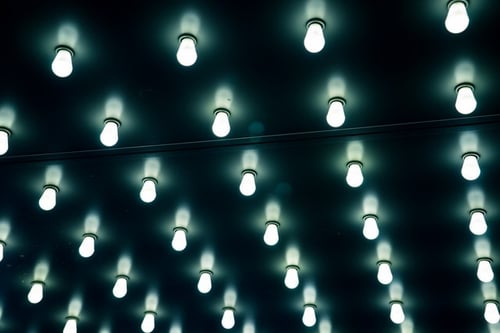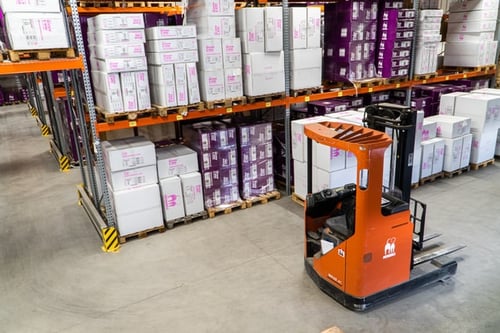
From street lights to holiday decorations and stadium floodlights to ambient table lamps, it seems that the purpose and variety of LED products can't be more diverse. When you add the environmental impact they have to the scope of their use, it becomes clear that ensuring the quality of these products is vital. For this and many other key reasons, tests that control the quality of LED lighting products don't have an alternative.
At the root of quality control
Quality assurance rests upon standards made to guarantee and improve product quality, reduce and eliminate risks to consumers, enhance the production process and, as a result of all this, ensure customer satisfaction and brand loyalty. Toward that end, reputable manufacturers conduct quality control (QC) tests. Like every other element of the production process, tests must be performed under controlled conditions.
 Like with every production process element, tests must be performed under controlled conditions
Like with every production process element, tests must be performed under controlled conditions
However, not all LED products undergo the same tests, nor are they all necessary in every market. Every product category falls under the custody of specifically designed QC standards. These standards even allow for a certain percentage of defective products. The acceptable quality level (AQL) is defined as the worst tolerable quality level, and it varies across industries. In the LED lighting industry, accepted AQL is three percent. Still, it may go as high as ten percent, depending on the product application. However, there are certain tests—such as safety tests—that all sampled products must pass.
Tests that control the quality of LED lighting products
As previously mentioned, not all markets have the same requirements for product testing. Before any manufacturer sets to export their LED products, they should check the chosen market requirements and remain up to date. Performing unnecessary tests or not performing needed tests is a waste of time and money. The most important tests, however, are the ones that ensure that the LED product is:
- Working properly—functionality test
- Performing after being exposed to external force—drop test
- Easy, safe, and fast to assemble and use—assembly test
- Well-insulated and safe to use—high-potential test
- Emitting acceptable electromagnetic interference—EMC or electromagnetic compatibility test
- Providing optimal brightness, color, light distribution, and luminous efficacy—light test
- Long-term use resistant—durability test
- Immune to repeated fluctuating loads—fatigue test
While some of the tests are self-explanatory, the others require further discussion.
Functionality Test
While it may seem simple, the functionality test is one of the most comprehensive. It examines whether the LED products function properly and according to the user manual's specifications. All features of the product must be tested, and all deviations reported.
Drop Test
The final product needs to reach the consumer first and, eventually, move with them. Hence, drop test serves an important purpose, particularly during transportation, explained moving experts from relosmart.asia. They added that everybody involved in the process must ensure top quality service, both movers and LED product and packaging manufacturers.
 A drop test is usually performed by dropping the product from a height of one meter
A drop test is usually performed by dropping the product from a height of one meter
A drop test is usually performed by dropping the product from a height of one meter. It is said "usually" because the height may differ depending on the specific standard and weight of the product. This kind of test is performed to confirm the sturdiness of portable LED lamps such as flashlights and table lamps.
Assembly Test
Most LED products are packed in pieces to ensure maximum safety in transport from the manufacturer to the end-user. The assembly test is a way to control the quality of LED lighting products and examines how easily a customer can assemble the product parts with the help of the user manual. A torque test can be seen as a part of the assembly test. It determines how easy it is to screw a LED bulb into the bulb holder and if any deviations will occur. If the needed rotational force (torque) is too high or too low, a part of the LED product holding the bulb won't function.
High-Potential Test
When it comes to quality control of lighting products, the high-potential test checks the most critical safety tests category. It determines if there is any leakage while electrical current flows through the product insulation. The test utilizes a higher voltage than the one the product will regularly handle for a short time. It is done to ensure the safety of the LED product during regular, long-term use at standard voltage.
Electromagnetic Compatibility Test
Are your electric appliances compatible? The electromagnetic compatibility or EMC test is there to prove if the LED product emits excessively high electromagnetic interference. Radiated and conducted emissions can, at best, disturb the work of other nearby appliances or, at worst, damage them. Performed in a specialized testing chamber, the EMC test will assess not only the level of these emissions but also the ability of the LED product to withstand them. If the product passes the test, it can properly function in its electromagnetic environment.
Light Test
Also called an integrating sphere test, it confirms if the LED product meets the color, brightness, and efficiency criteria. The test is performed by putting a LED light within the integrating sphere and observing the results with the help of computer software.
 A light test confirms if the LED product meets the color, brightness, and efficiency criteria
A light test confirms if the LED product meets the color, brightness, and efficiency criteria
Metrics that are followed as a part of this test include the color rendering index (CRI), color temperature ("warm" and "cool" light), lumens (lighting output or brightness), power consumption, and power factor.
Durability Test
The result of a durability test determines the length of the warranty period. That is, as long as the LED product is used with care and according to the manual. In other words, durability product testing determines the product's reliability during long-term use.
Fatigue Test
Mechanical fatigue tests measure the ability of functional parts to withstand repeated service load or so-called cyclic loading. Normally, functional parts such as switches and push buttons are designed not only to meet but to exceed anticipated service loads.
An additional takeaway
It's important to be aware of the differences between quality assurance tests and those that control the quality of LED lighting products. While the first one prevents product defects, the latter is set to detect them. If the product is damaged during the test, modifications and improvements are in order.







